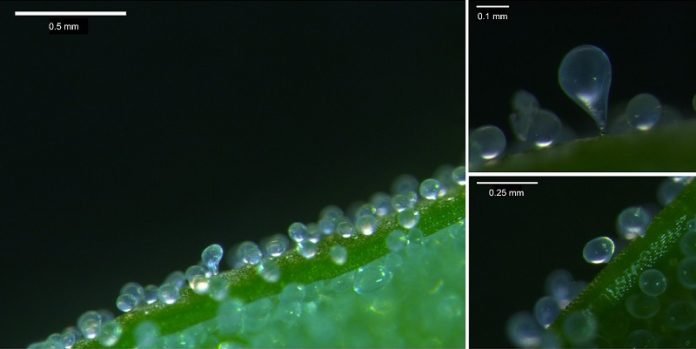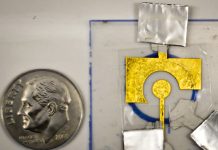
Quinoa, a protein-rich crop known for its ability to thrive in harsh conditions, has long been admired for its resilience to drought and salt.
However, recent research has unveiled a fascinating twist about this plant: its unique ability to ward off pests and diseases.
Scientists once thought the key to quinoa’s toughness lay in its bladder cells – tiny, balloon-like structures dotting its surface.
These cells were believed to store water and manage salt, making quinoa a drought and salt-tolerant plant.
But a groundbreaking study led by Max Moog and Professor Michael Palmgren from the University of Copenhagen’s Plant and Environmental Sciences department has turned this theory on its head.
Moog and Palmgren’s team grew mutant quinoa plants lacking these bladder cells to compare them with normal quinoa. Surprisingly, they found that the absence of bladder cells didn’t diminish the plant’s salt and drought tolerance. In fact, it was the opposite: plants without bladder cells were more vulnerable to insect infestations.
So, what’s the real role of these bladder cells? The research revealed that these cells are not mere water reservoirs but a powerful defense mechanism against pests. These cells, filled with substances like oxalic acid (also found in rhubarb and poisonous to pests), act as both a physical and chemical barrier.
Pests trying to feed on the plant find themselves deterred by these cells.
The bladder cells also shield quinoa from common plant diseases, such as the bacterial infection caused by Pseudomonas syringae, by covering entry points on the leaves.
The implications of this discovery are vast, especially for quinoa cultivation worldwide.
Quinoa varieties vary in bladder cell density, and this variation could be key to breeding ‘super quinoa’ – crops that are not just drought and salt tolerant but also resistant to pests and diseases.
This knowledge can be used to tailor quinoa varieties to specific regional challenges, like breeding varieties with more bladder cells in pest-prone areas.
This research adds a new layer to our understanding of quinoa. It’s not just a plant that can withstand non-biological stress like drought and salt; it’s also equipped to combat biological threats like pests and diseases.
This breakthrough, a testament to the dynamic nature of scientific inquiry, highlights the importance of questioning established beliefs and continually exploring the unknown.
Funded by entities like the Novo Nordisk Foundation and part of the EU’s Horizon 2020 program, this research is a collaborative effort involving multiple universities.
It showcases how cross-border cooperation can lead to significant scientific advancements, changing our perception of a crop as fundamental as quinoa.



